Here is the harsh truth: if you aren’t ranking in Google’s top 10 results for your target keywords, your website might as well be invisible on Google.
There are several strategies and techniques you can follow that can possibly increase the likelihood of ranking.
However, if you don’t get the basics right, like your on-page SEO, your chances of ranking on page one of Google are minimal.
By following SEO best practices, you will be laying the groundwork for your site to increase its visibility in search. Once you have laid the groundwork, you can move on to more advanced keyword research and link building strategies.
In this article, we’ll review nine SEO best practices that you should follow to better your chances of ranking well for your targeted keywords.
What Are SEO Best Practices?
According to HubSpot, 75% of searchers never go past the first page of search results — this is why it is so essential to rank on the first page of Google.
You can put your best foot forward by following SEO best practices.
According to Google, SEO best practices are tasks that will “hopefully make it easier for search engines to crawl, index, and understand your content.”
Let’s dive into some of the most important ones to follow.
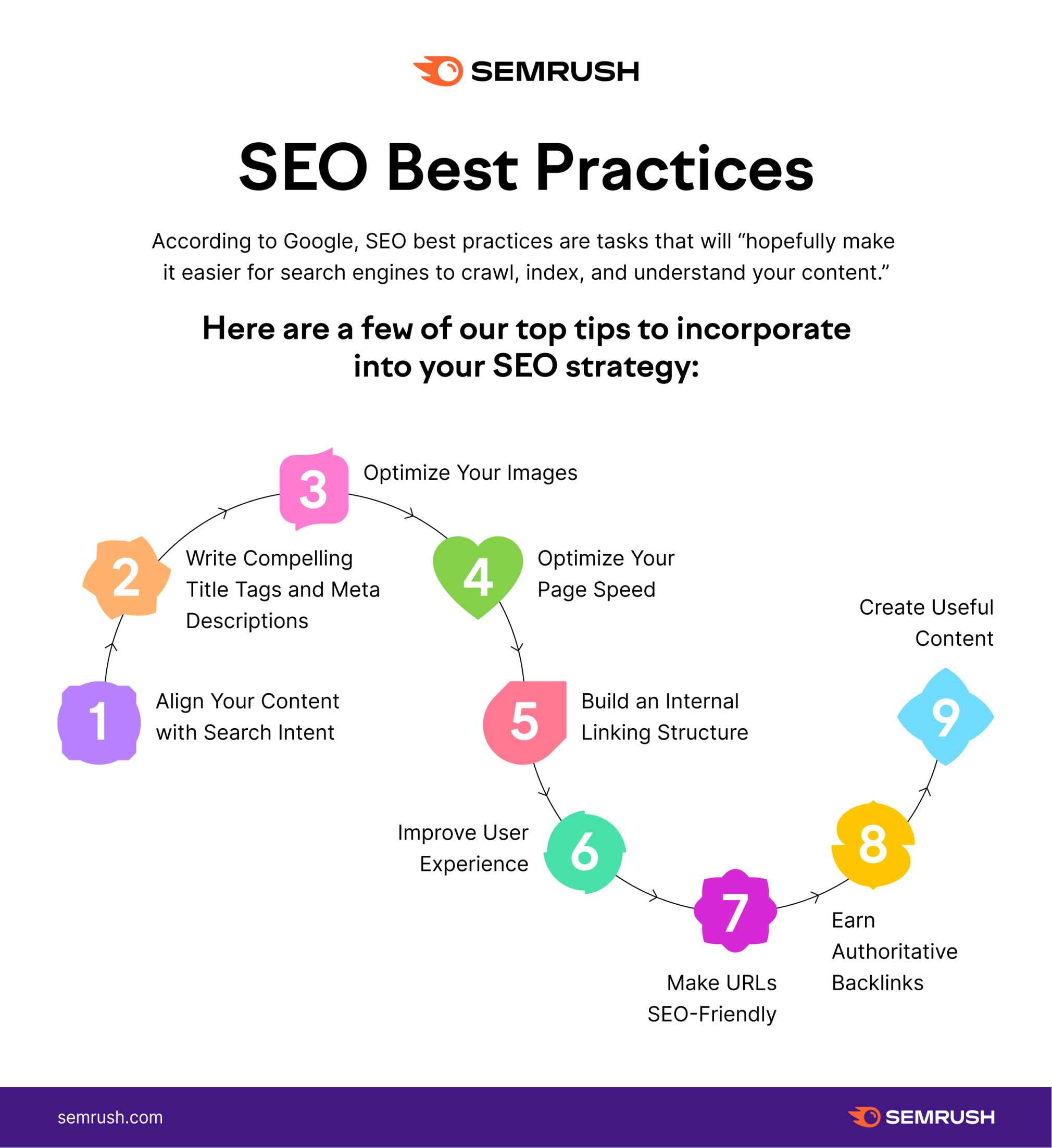
1. Align Your Content with Search Intent
Once you have an idea of what SEO is and how to find keywords to target, it’s a good idea to think deeper about search intent.
Search intent (also called “user intent”) is the purpose behind every search query. Understanding and satisfying search intent is Google’s ultimate priority. Pages that rank on the first page of Google have all passed Google’s litmus test on search intent.
For instance, take a look at the search results for “how to make oatmeal cookies.”
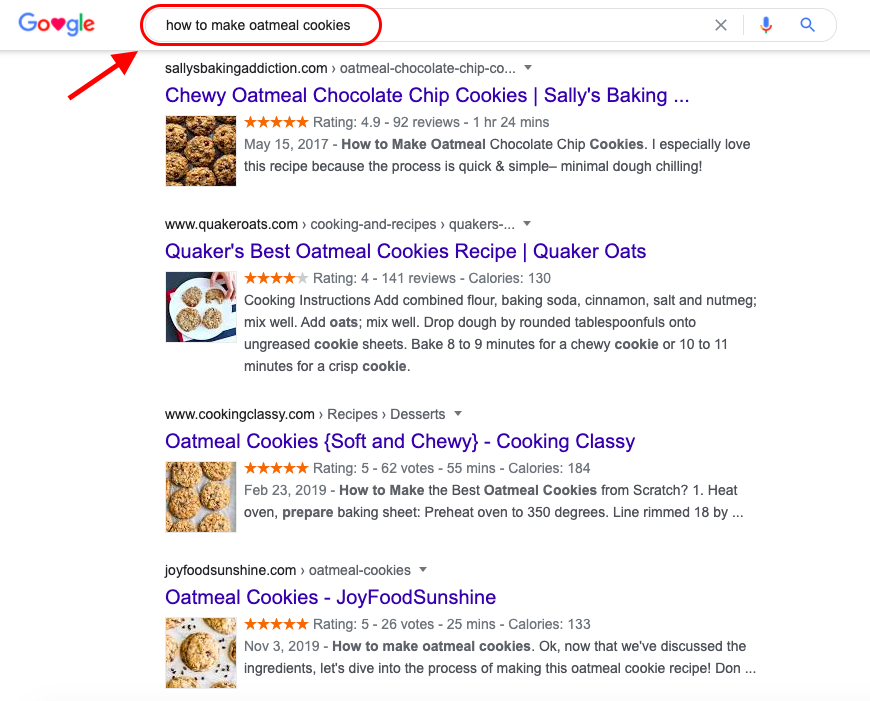
The top search results are blog posts or videos, not ecommerce pages selling oatmeal cookies. Google understands that people who are giving this specific search are looking to learn, not to buy.
On the other hand, top search results for a query like “buy oatmeal cookies” are ecommerce pages. Because in this case, Google understands that people are in buy mode. Therefore, the top results don’t include links to oatmeal cookie recipes.

For that reason, if you would like to rank your pages on page 1 of Google in 2021, you need to understand the concept of search intent and create content that aligns with user intent.
There are four common types of search intent:
Informational: A search falls under informational intent when the user is looking for specific information. It can be a simple search like “what’s the weather today?” that provides instant results or something complex like “best SEO strategies” that requires a more in-depth explanation. Navigational: In this case, the searcher is looking for a specific website or app. Common examples of navigational searches include “Facebook login,” “Semrush,” and “Amazon.” Commercial: The intent behind a search is commercial when the user is looking for a specific product but hasn’t made the final decision yet. For example, searches such as “best SEO tools” and “best DSLR cameras” are all commercial searches. Transactional: Here, the intent is to buy. The searcher has already made a decision to buy a specific product or tool. Examples include searches such as “buy Nikon d500,” “buy Macbook Air,” and “buy groceries online.”Semrush also identifies search intent in various keyword research tools, taking out the guesswork for you.
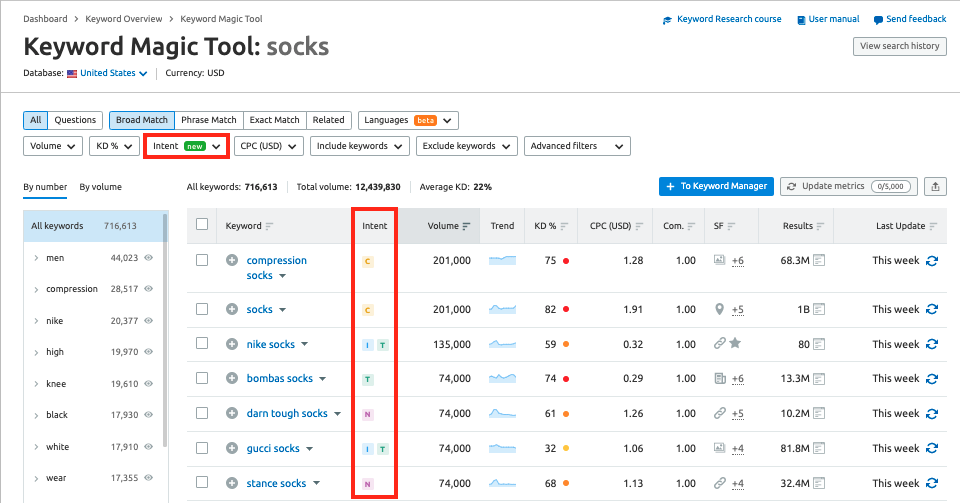
An SEO best practice is to always keep the search intent in mind while creating content for your website.
For instance, if you would like to rank for the keywords “best DSLR cameras,” you need to realize that the search intent here is commercial, not transactional. The user is still undecided on which DSLR brand to choose.
There is no point in optimizing your DSLR landing page with those specific keywords. Google understands what users want when the search query is “best DSLR cameras.” They are looking for options. They are looking for a blog post or video which lists down the best DSLR cameras, not product pages or ecommerce pages.
Bottom line: Create content that aligns with the search intent of your target audience.
2. Write a Compelling Title Tag and Meta Description
Your page title and meta description are two of the most important meta tags on your page. Let’s cover title tags first.
Title Tags
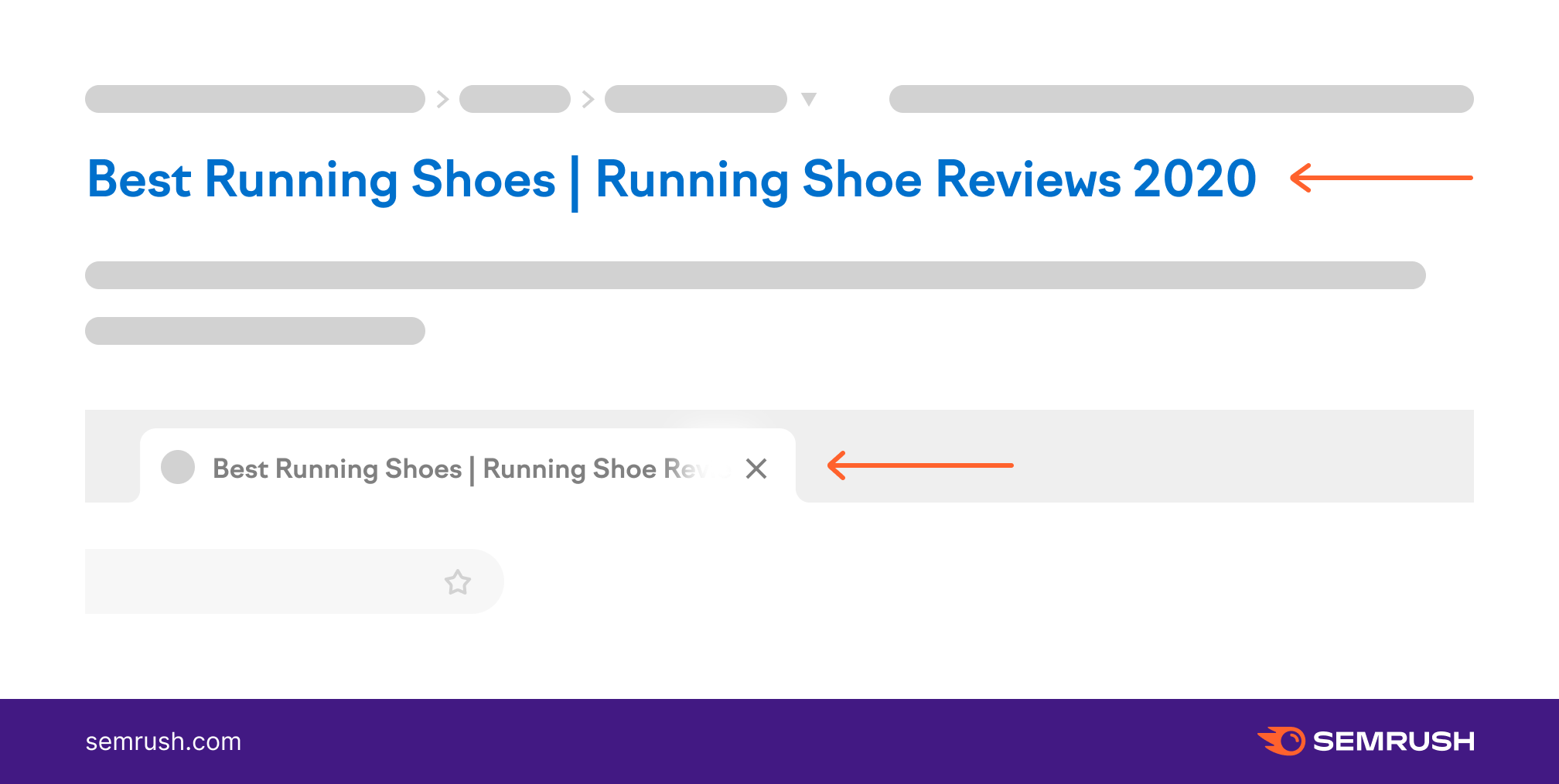
Title tags are clickable headlines that appear in search results and are extremely critical from an SEO perspective.
According to Google:
Titles are critical to giving users a quick insight into the content of a result and why it’s relevant to their query. It's often the primary piece of information used to decide which result to click on, so it’s important to use high-quality titles on your web pages.
Search engines like Google typically display the first 50-60 characters of a title. Google will display the full title to your page as long as you keep your title tag under 60 characters.
Here are some other best practices to keep in mind while creating title tags:
Include your target keywords Write a title that matches search intent Avoid creating duplicate title tags Avoid keyword stuffing Keep it descriptive but conciseMeta Descriptions
The second most important meta tag on a page is the meta description. A meta description is a brief summary of a page in the SERP (search engine results page) displayed below the title tag.
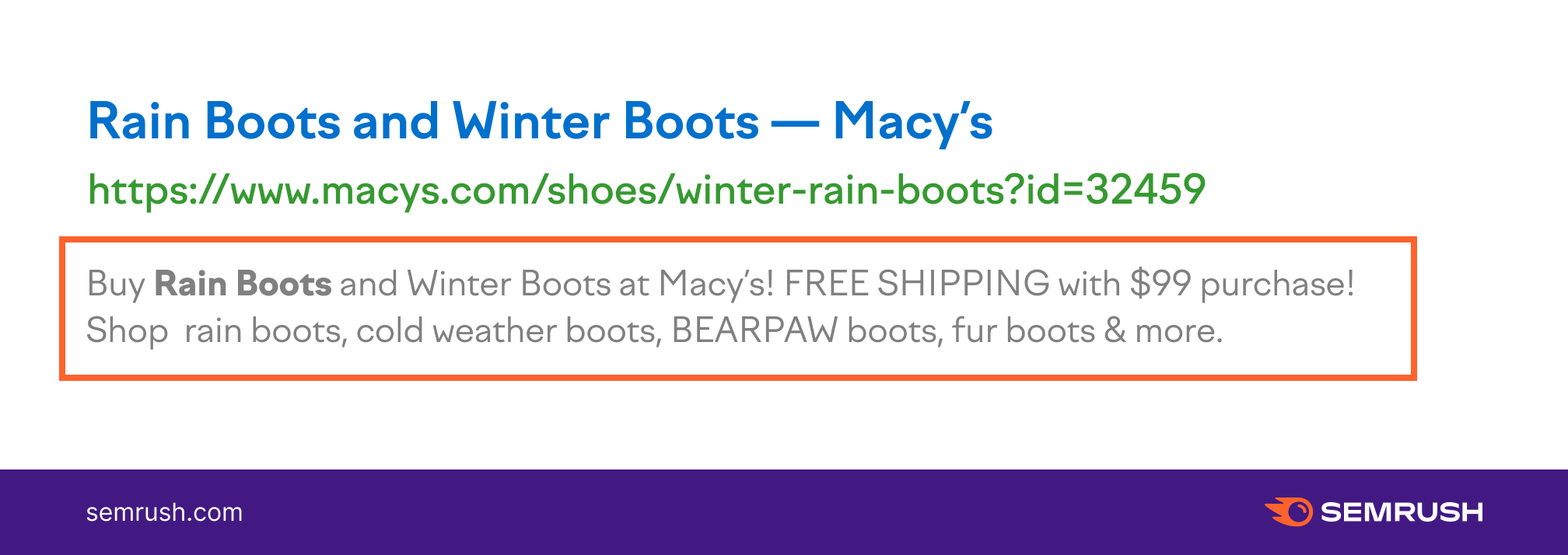
Meta descriptions do not directly impact search rankings, but they can influence click-through rates.
Google explains it best:
“A meta description tag should generally inform and interest users with a short, relevant summary of what a particular page is about. They are like a pitch that convinces the user that the page is exactly what they’re looking for.”
Google typically truncates meta descriptions to 155–160 characters, so make sure you provide an accurate summary of your content while keeping it under 160 characters.
Here are some best practices to follow while writing your meta descriptions:
Write unique meta descriptions for each page Use action-oriented copy Include your target keywords Match search intent Provide an accurate summary3. Optimize Your Images
Images play a crucial role in improving the user experience of visitors on your site. Chances are you spend a lot of time selecting the right images to enhance your blog posts, product pages, and other important pages on your site.
But do you spend an equal amount of time optimizing the images on your site? When used the right way, images can contribute to your site’s overall SEO and boost organic traffic. Below are four things you can do to optimize your images.
Choose the Best File Format
Site speed is an important ranking signal, and images are often the largest contributor to overall page size. As a result, you need to optimize images for speed in order to improve the overall performance of your site.
The first step involved in optimizing images is picking the best file format, so let’s look at JPEG vs. PNG. vs. WebP.
The most commonly used image formats on the web are JPEG and PNG. Both of these formats use different compression techniques, which is why the file sizes between these two can be dramatically different.
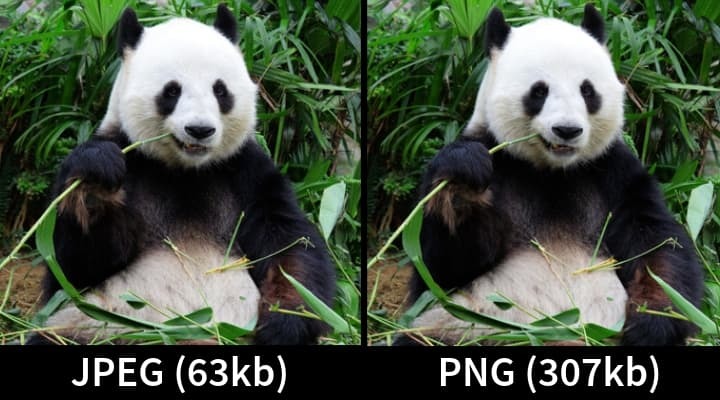
Looking at the difference in file sizes above, it would be easy to declare JPEG as the clear winner. But it would be a mistake to use JPEG as the de facto image format for your site.
While JPEGs look great for photographs (as seen in the Panda image above), PNGs are best suited for images that contain text, line drawings, etc. This illustration by Digital Inspiration proves my point.
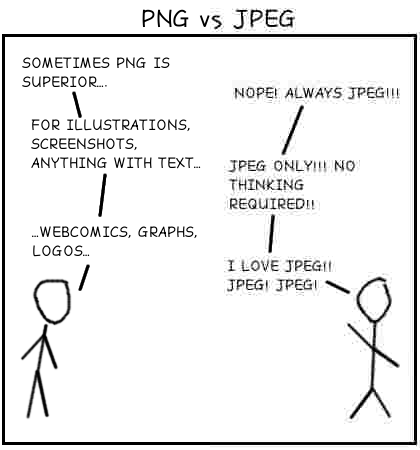
WebP is another option, which Google breaks down:
“WebP is a modern image format that provides superior lossless and lossy compression for images on the web.
WebP lossless images are 26% smaller in size compared to PNGs.
WebP lossy images are 25–34% smaller than comparable JPEG images at equivalent SSIM quality index.”
Learn more about how to use WebP in this Google guide.
Compress Your Images
The larger your image file size, the longer it takes the web page to load, which is why it is imperative that you compress your images before uploading them on your site.
Luckily, there are several free tools out there that can help you compress your images.
TinyPNG: TinyPNG uses smart lossy compression techniques to reduce the file size of your PNG and JPEG files. ImageOptim: If you’re a Mac user, you can download and use this free tool for all your image compression needs. ImageOption is a tool recommended by Google as well. It’s by far the best tool for compressing JPEGs, but not for PNGs. For compressing PNGs, you’re better off using TinyPNG. ShortPixel: If you run your site on WordPress, you can install this plugin to compress your images. ShortPixel’s free plan allows you to compress 100 images per month.Provide Alt Text for Images
Despite advances in Google’s abilities to understand images, adding alt text to images is still a necessary step. Adding alt text to images improves web accessibility and helps browsers better understand the images on your site.
Here is what Google says about writing alt text:
When choosing alt text, focus on creating useful, information-rich content that uses keywords appropriately and is in context of the content of the page.Avoid filling alt attributes with keywords (keyword stuffing) as it results in a negative user experience and may cause your site to be seen as spam.
When writing alt text for images, be concise in your description, and avoid stuffing your target keywords.
Lazy-Load Your Images
Lazy loading is a technique that defers the loading of non-critical resources (images, videos, etc.) at page load time. Instead, images and videos are loaded only when users need them.
Here is how Google explains the link between lazy loading and site performance:
When we lazy load images and video, we reduce initial page load time, initial page weight, and system resource usage, all of which have positive impacts on performance.
To lazy load your images and videos on WordPress, you can use the free a3 Lazy Load plugin.
4. Optimize Your Page Speed
If your site takes a long time to load, you are going to have a lot of frustrated users, and your rankings might drop.
There are several free tools that can help you check your page speed, including Google’s very own PageSpeed Insights; you can learn how to improve your Google PageSpeed Insights score here on Semrush.
The tool I recommend for this task is GTMetrix. This free tool provides insights on your page speed and gives recommendations on the steps you can take to improve your load time.
You can also use Semrush to perform a site audit and fix all the performance issues with your site. Here is how:
Login to your Semrush dashboard and navigate to Projects → Add New Project → Enter your domain Enter all the details here and hit “Start Site Audit” Semrush will generate an audit report showing all the on-site issues you need to fix to improve the overall SEO health of your site From the audit report, navigate to Site Performance and click on the “View details” button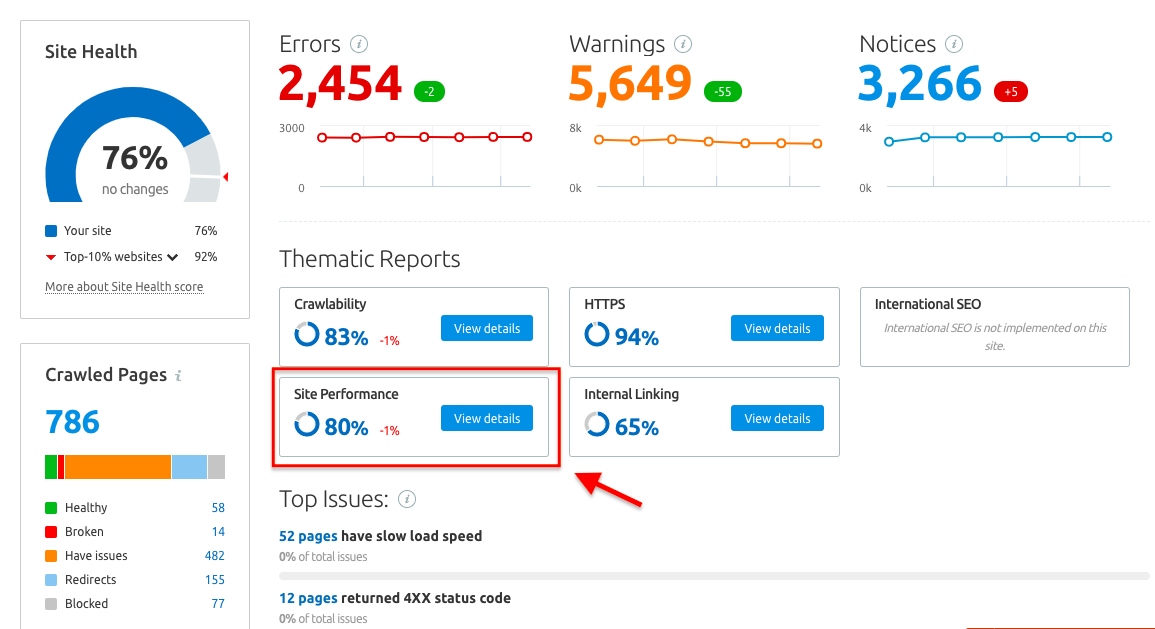
Now you can view all the performance issues on your site that are preventing it from loading faster and take steps to fix them.
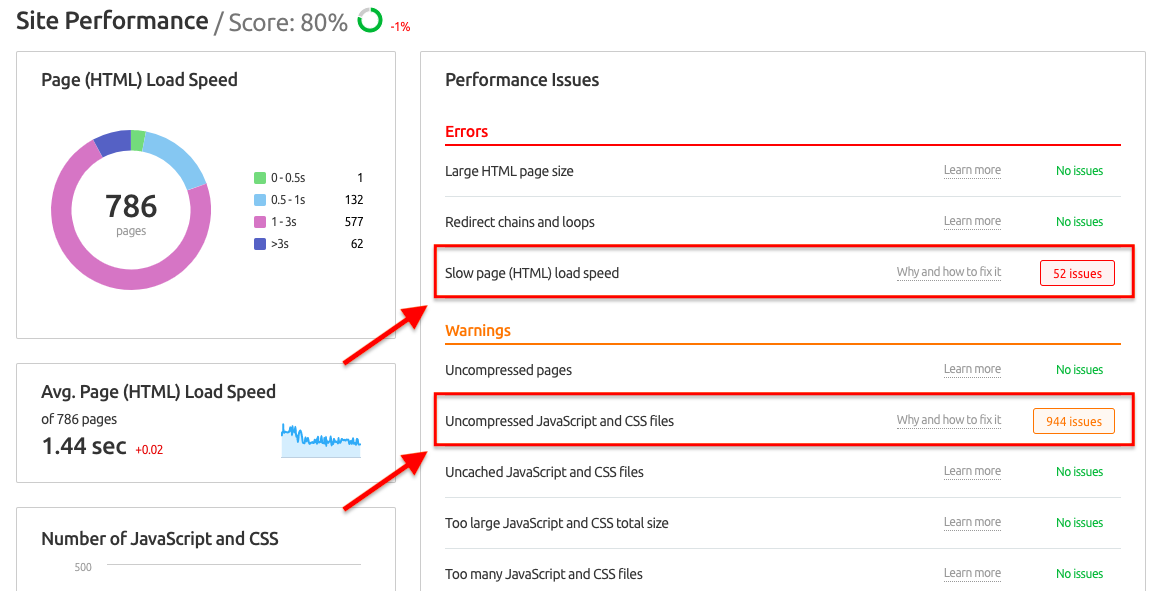
A quick and easy win in improving your page speed would be to compress your images.
In addition to image compression, here are some other things you can do to help your pages load faster:
Enable browser caching Delete unnecessary plugins Reduce server response time Reduce the number of redirects Minify CSS and JavaScript files5. Build an Internal Linking Structure
Internal links are important because they establish an information hierarchy for your website and also help Google get a deeper understanding of the content on your page.
When used the right way, internal links have the ability to boost your rankings.
For example, NinjaOutreach boosted their organic traffic by 40% by optimizing internal links.
An SEO best practice is to add internal links from top-ranking pages on your site to pages that need a boost.
You can also use Semrush to identify and fix internal linking errors on your website. The Internal Linking Report within Semrush’s Site Audit tool can be extremely useful in identifying problems with your site’s internal link structure.
Run a site audit for your site on Semrush to generate an audit report Navigate to Internal Linking and click on the “View details” button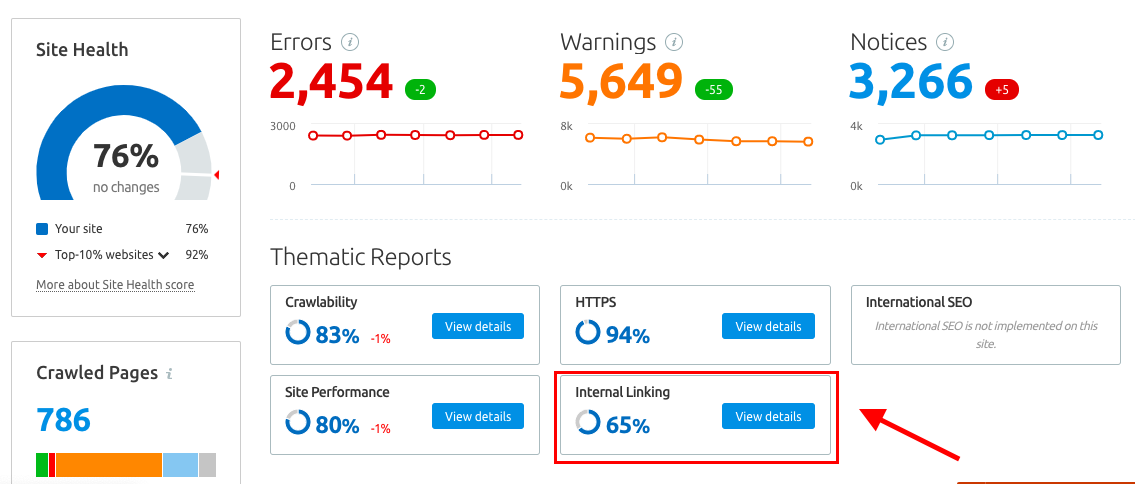
Now you can view all the internal linking issues on your site and go about fixing them.
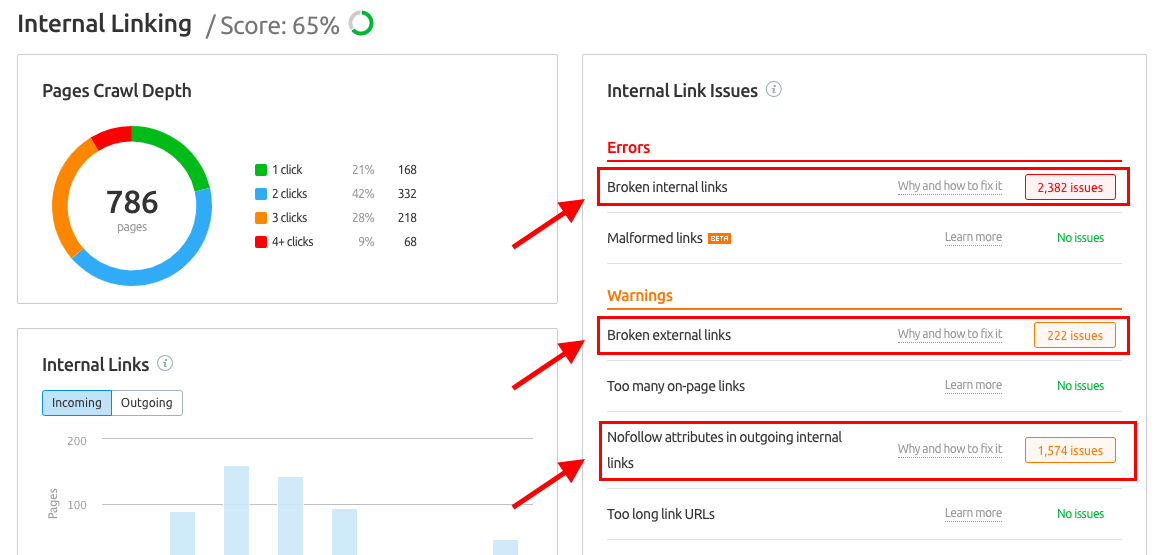
6. Improve User Experience
Google keeps a close eye on how users engage with your pages. As such, user experience is one of the key factors in improving your search rankings.
As noted above, page speed plays a vital role in improving the user experience of visitors on your site.
Here are a few other SEO tips to ensure that users have a good experience when they visit your site:
Use subheadings: Proper use of subheadings (H1, H2, H3) helps Google understand your content better and makes your text more accessible to readers Make your content visually appealing: Several studies indicate that visuals help people understand your content better. Use relevant images, videos, and screenshots to illustrate your points. Avoid using intrusive popups: Popups are not just bad from an SEO perspective, but they also end up annoying your visitors. Since 2017, Google has penalized sites that use intrusive popups, so it’s best to use them sparingly. Use white space: White space is a fundamental aspect of good design. According to the Interaction Design Foundation, white space (or negative space) improves legibility, branding, and focus. So consider using white space to make your content more legible and grab user attention. Make your site mobile-friendly: Mobile-friendliness is paramount when it comes to user experience as Google uses mobile-first indexing. You can use Google’s mobile-friendly test to see how your site fares.7. Make URLs SEO-Friendly
URL structure is an often overlooked aspect of SEO. A good URL structure provides both users and search engines an idea of what the destination page is all about.
Google explains it best:
A site’s URL structure should be as simple as possible. Consider organizing your content so that URLs are constructed logically and in a manner that is most intelligible to humans (when possible, readable words rather than long ID numbers).
With that in mind, here is how you can create a well-structured URL:
Use short URLs: A study conducted by Backlinko found that short URLs tend to outperform long URLs in SERPs. Use keyword-rich URLs: Always include your target keywords in the URL to increase your chances of ranking better in search results. Include categories or subfolders if necessary: If you’re selling goods, you may have a “shop” subcategory, as seen in the image below. This helps both users and search engines navigate your site. Remove unnecessary stop words: Keep your URL clean and easy to read by avoiding stop words. See above for a good URL example and a not-so-good URL example.
See above for a good URL example and a not-so-good URL example.8. Earn Authoritative Backlinks
Despite several changes to Google’s search algorithm and ranking system, Google still considers backlinks to be a key ranking signal. Google recognizes backlinks as votes of confidence.
If your web pages have many authoritative backlinks, they are more likely to do well on the SERPs.
That said, not all backlinks are created equal. Some backlinks can boost your ranking for specific search queries exponentially, while others may be considered “toxic.”
Google won’t necessarily penalize you for backlinks from poor-quality sites. However, if you participate in link schemes or buy backlinks, you’re likely to get a Google penalty.
You should focus all your efforts on building high-quality backlinks that can improve your chances of ranking higher for your target keywords.
One of the most effective ways to obtain authoritative backlinks is by replicating your competitors’ link building strategies.
You can use Semrush’s Backlink Gap tool to analyze the backlink profiles of up to five competitors to unravel untapped link building opportunities.
To get started:
Navigate to Gap Analysis —> Backlink Gap Enter your domain as well as up to four of your top competitors’ domains, and hit “Find prospects”The Backlink Gap tool will return a graph and a table depicting the comparison between the five domains’ backlink profiles. The graph provides a quick glimpse at the most recent link building activities of your competitors.
To identify link building opportunities for your site, you need to select your domain in the drop-down menu just above the table.

This list will include the websites that are linking to your competitors’ domains, but not yours.
Armed with this knowledge, you can kickstart a campaign to target your competitors’ most authoritative backlinks.
You don’t even need to leave the tool — simply click the “Start Outreach Button” to send prospects to the Link Building Tool.
Of course, you’ll need to build solid content worth linking to first.
9. Create Useful Content
Unfortunately, there’s no one piece of advice that can skyrocket your content to the top of the SERP.
However, it’s best to focus on quality above all else. And, of course, user intent.
Here are a few content-specific best practices to follow:
Find the right keywords to target Identify user intent Review competing content Keep linking structure in mind Gather original data Include visuals Optimize headers and meta tagsNote that there’s no mention of content length. Outdated SEO advice often dictates that longer content is always better; however, that’s not always the case.
Content should above all else answer the user’s search query adequately. Sometimes this may require a much lengthier page, and sometimes a shorter page will suffice.
So long as your content is well-researched and matches your users’ intent, you will be in a good place.
Choosing the Right Keywords
Long-tail keywords tend to have low search volume, but in some cases, they could help reach the customers you need. If the search volume is just too low, aim for mid-tail keywords with low to medium keyword difficulty.
You can use Semrush to determine the keyword difficulty score of all the keywords you would like to use in your content.
Enter your keyword(s) in the Semrush search bar and hit the “Search” button. The Keyword Overview tool will provide key data, including total search volume, keyword difficulty score, and more.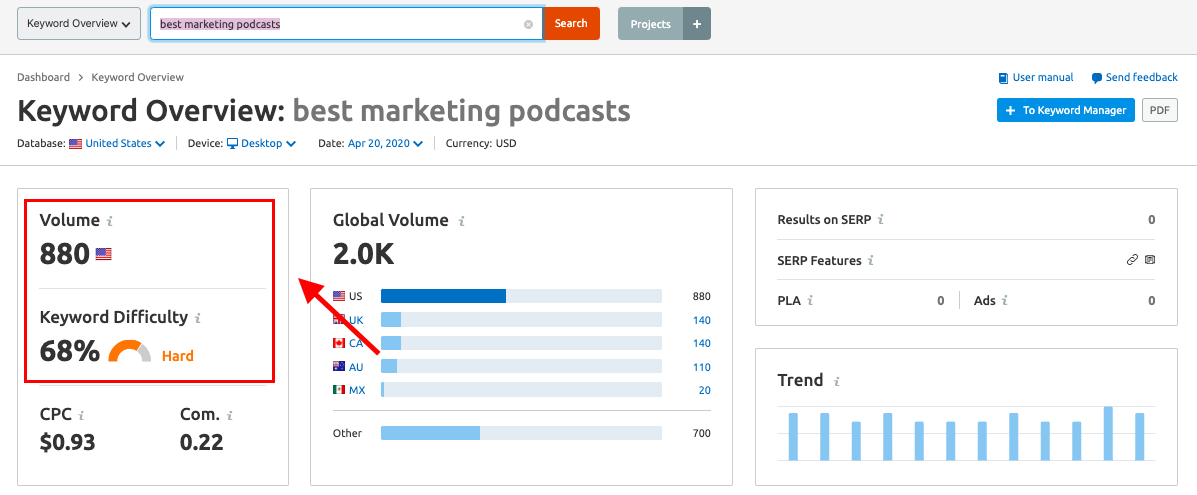
You can scroll down to see keyword variations, questions, and related keywords.
Click the “View all” button under each of these sections to see different variations of your seed keyword(s) alongside useful keyword metrics.

With the help of this data, you can determine which keywords are worth targeting while creating content.
You can also use the Keyword Magic Tool to dive a little deeper into the results by using filters and viewing the search intent behind your chosen keyword.
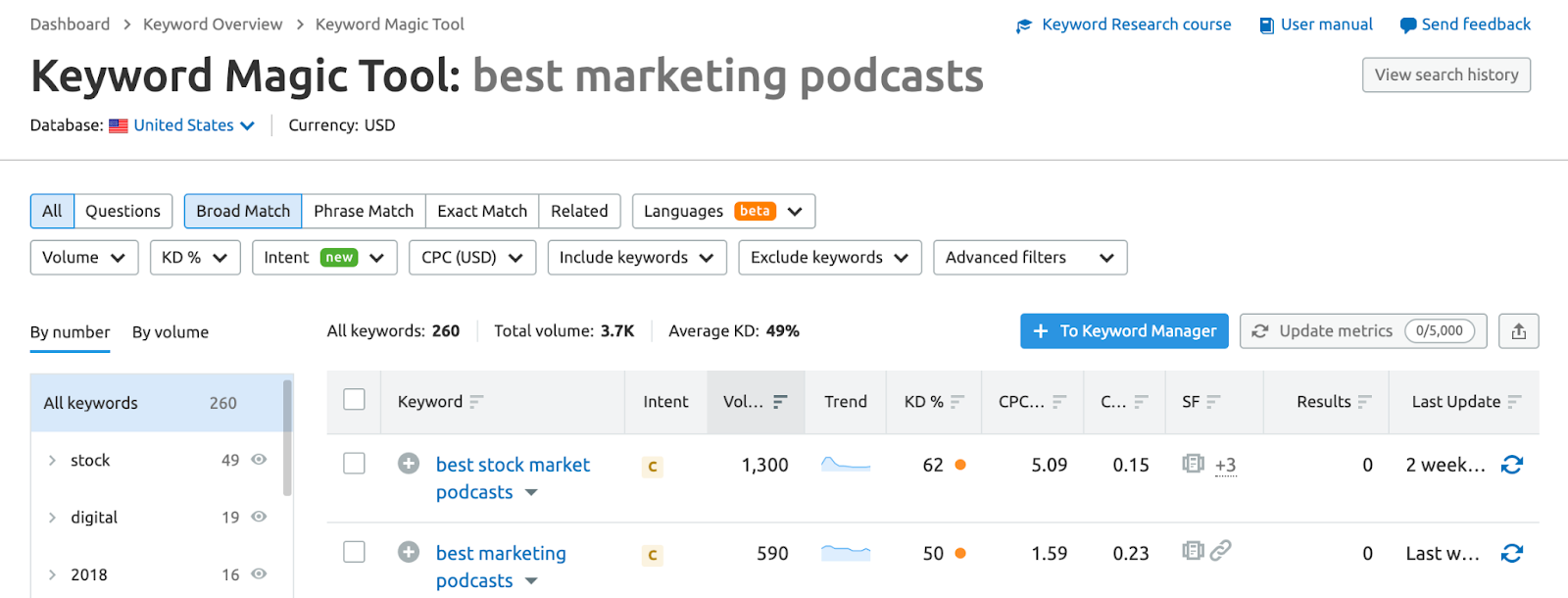
Final Thoughts
The SEO best practices outlined above are a great starting point to achieve higher search rankings. That said, the competition for the coveted first page on Google is intense, regardless of the niche you operate in.
Once these best practices are in place, make sure you are sufficiently up to speed with the latest SEO trends and follow other SEO techniques from time to time to stay ahead of the game.
Additional resources:
Learn SEO: The Beginner’s Guide to SEO Are You Getting These 21 SEO Basics Right? (How To Do SEO if You Are a Beginner) A Comprehensive SEO Guide to 301 Redirects Link Building for SEO: How to Do It Right in 2021 A Beginner’s Guide to Canonical Tags 27 of the Biggest SEO Mistakes Damaging Websites in 2021 Local SEO Basics What Is Anchor Text? Everything You Need to Know for SEO How to Improve Keyword Rankings with Internal LinkingInnovative SEO services
SEO is a patience game; no secret there. We`ll work with you to develop a Search strategy focused on producing increased traffic rankings in as early as 3-months.
A proven Allinclusive. SEO services for measuring, executing, and optimizing for Search Engine success. We say what we do and do what we say.
Our company as Semrush Agency Partner has designed a search engine optimization service that is both ethical and result-driven. We use the latest tools, strategies, and trends to help you move up in the search engines for the right keywords to get noticed by the right audience.
Today, you can schedule a Discovery call with us about your company needs.
Source:





